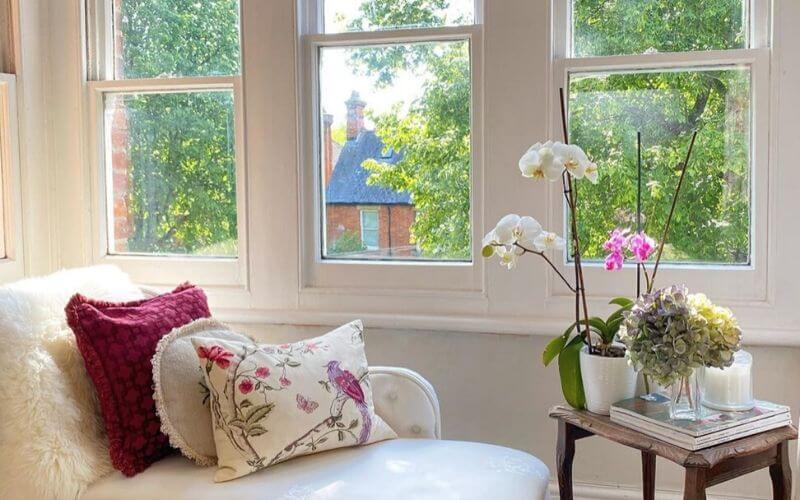
Orchids have a reputation for being finicky and difficult to care for. This does not have to be the case, though. If cared for correctly, Orchids can thrive indoors and even bloom several times throughout the year!
It is no secret that orchids are beautifully elegant and can add a touch of class to any room that they might find their way into.
Where should you put your Orchid in my house?
Most Orchids are grown best in indirect, bright light, placing the orchid pots near a north-facing window may not provide them with enough light so try to place them near a near a south or east-facing window in your living room to ensure that they receive the right amount and intensity of sunlight to bloom.
But the living room is not only place to keep your Orchid. There are many factors that play into where you should put your Orchid plant, but the most important is lighting.
Let’s have a look at some of the best places to keep your Orchid in your home, and how to help it to thrive there:
1: Living Room Or Foyer
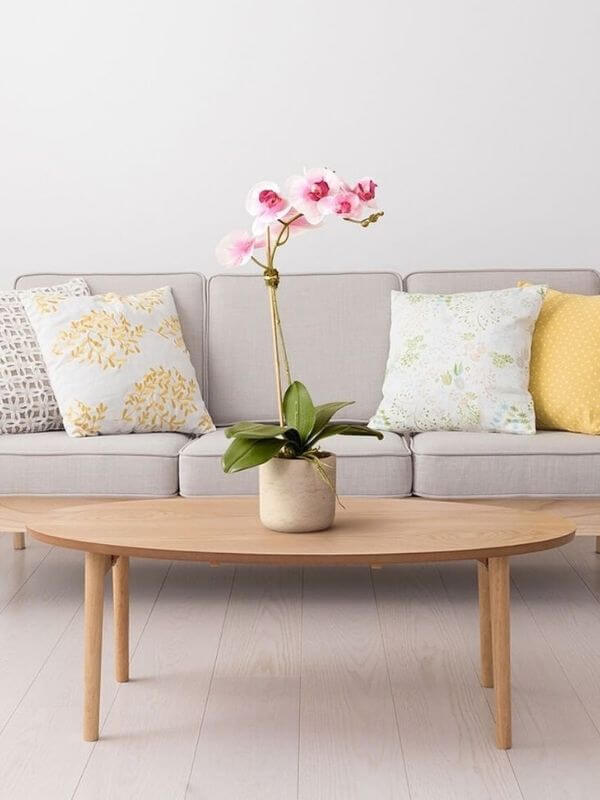
Most people, (including myself), hope to showcase their most beautiful plants in places that have visitors and curious eyes.
The living room or foyer are great places for your pretty Orchid to receive the attention that it deserves. The best thing about keeping Orchids in the living room is that the living room tends to be bright.
The first thing to consider when placing your Orchid is light. Orchids need bright, indirect light to survive.
Once you have determined whether your living room is bright enough, the next consideration should be the kind of light that shines through the windows.
Light shining through South or East facing windows is ideal. West facing windows tend to be too bright (the UV concentration can ‘burn’ your Orchid), while North facing windows can be too dark or cold.
2: Bedroom
If you are considering your bedroom as an option to keep your Orchid, you should, again, consider the lighting.
If your bedroom receives ample lighting through a South or East facing window, your lighting should be great.
Some other things to consider when placing your orchid in the bedroom are temperature and air movement.
A lot of people like to shut the bedroom door at night. If you are one of those people, be sure that there is plenty of air movement in your bedroom.

Orchids need air movement to aid in respiration, and with still air, Orchids are prone to rot. If your air is fairly still, you could always run a fan to keep the air moving.
Temperature is a very important factor in keeping your Orchid healthy and beautiful. If it is too hot, your Orchid can become dehydrated or even suffer from other maladies.
If your Orchid is too cold, your Orchid can suffer from ailments such as rot. The best temperature for your Orchid depends upon the species, however, 60-70 degrees Fahrenheit is a good general range for many Orchids.
Just make sure that your bedroom does not get too hot or too cold. Always remember to consider checking the outdoor temperature before you open a window.
3: Bathroom
An Orchid can be a simple and elegant addition to any room that is lacking in ‘personality’. The most common room to ‘need a little help’ is the bathroom. There are some inherent benefits and risks of keeping your Orchid in the bathroom.
The biggest advantage that the bathroom can have over another room in the house is humidity.
Although the humidity that a bath or shower might provide will not be maintained permanently, the boost in humidity can be good for the plant.

Materials such as tile and linoleum can also help the room to maintain a slightly higher humidity on a consistent basis. Orchids generally thrive in an environment with a relative humidity between 50% and 80%.
There are, however, some significant issues that the bathroom environment can pose for the health of your Orchid.
The first of these is lighting. Bathrooms tend to be dark. High humidity levels in a dark environment are a sure way to encourage rot.
Another contributor to this problem is the fact that bathrooms tend to lack air movement.
The other problem with keeping your Orchid in the bathroom is the exposure to harmful chemicals.
If you use cleaners such as bleach or ammonia, or even products like hairspray or body spray, your Orchid can absorb these chemicals through respiration.
After some time, the health of your Orchid will decline with such exposure.
Eventually, your Orchid will cease to bloom and eventually die. If, however, your bathroom is well lit and extremely well ventilated, your Orchid might actually do quite well.
4: Dining Room
Orchids can make a great centerpiece for a dining room table or even a good focal point on a countertop in the kitchen or dining room area.
Once again, be sure that there is adequate lighting when choosing a place for your Orchid.
Some other things to think about when putting your orchid in the dining room or kitchen are temperature fluctuation and chemicals.
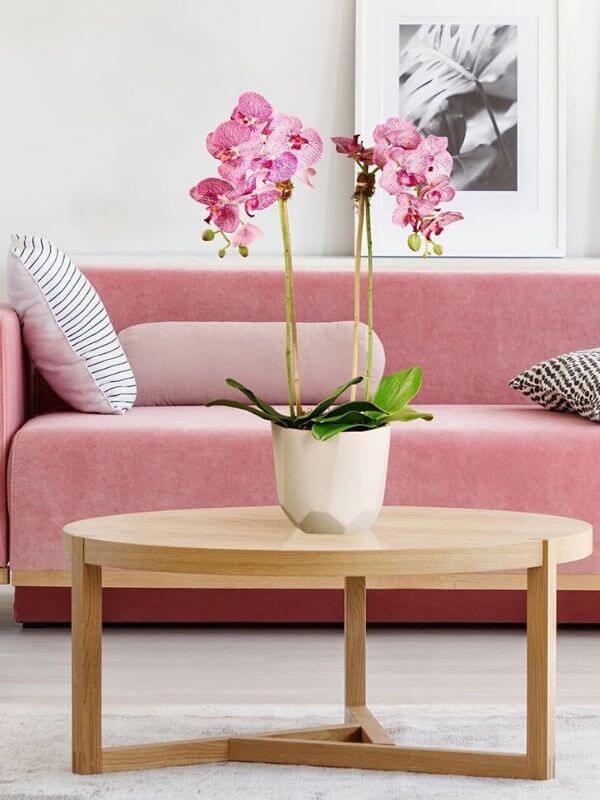
If you plan to use your Orchid as a centerpiece or accent, be sure that you take care when cleaning your table or countertop.
As mentioned before, your Orchid will be sensitive to external chemicals due to the level of respiration that it will undergo on a regular basis. Aerosols and fumes can be detrimental to the health of your plant.
Another hazard in or near the kitchen or dining room can be the temperature fluctuation due to ovens, dishwashers, or refrigerators.
If you place your Orchid in the kitchen or dining room, take care to keep it away from intense heat or cold drafty areas.
5: Hallway Or Mudroom
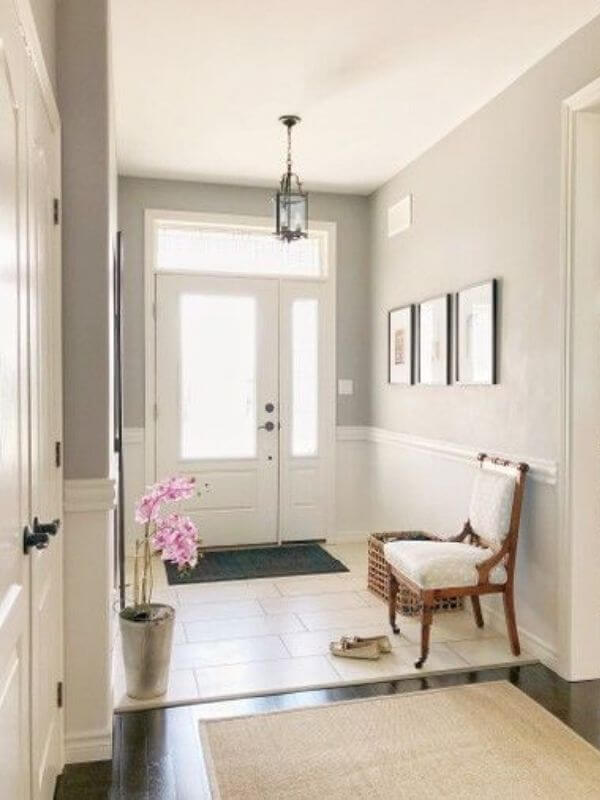
Keeping your Orchid on Display in the hallway or mudroom can be a great way to ensure that your new plant is noticed by visitors in your home.
The requirements are the same as in any other room. Just make sure that it receives ample light and air movement.
The only dangers of keeping your Orchid in the hallway or mudroom are unwanted drafts and darkness.
Drafty air can sometimes mean drastic temperature fluctuations and humidity loss. If your Orchid is near an exterior door, be sure to check the humidity.
You can always mist your Orchid on a regular basis to increase the humidity.
If, however, your orchid gets too much cold air from the outside, you might want to consider keeping it somewhere else.
6: Home Office
If you work from home or frequently use an in-home office space, keeping a bit of life near you is a good idea. It can definitely help to ward off depression and burnout.
The best thing about keeping your Orchid in your home office is that you will be constantly reminded of the care that it needs.
As long as you keep your Orchid in bright, indirect light and maintain the humidity and temperature, the home office can be as good of a place as any to keep your orchid.
Some Other Things To Think About
Now that we have taken a look at how to keep your Orchid in various places throughout your house, let’s have a look at a few other things that can help to ensure success with your new Orchid friend:
Watering Your Orchid
When you bring home your new Orchid, it will be advantageous to place it in an area that is easily accessed.
This will allow watering your Orchid to be as easy as possible and hard to forget. It is best to water your Orchid just before the potting medium becomes dry.
The easier it is to water your Orchid, the more likely you will be to water it when it gets thirsty.
Preventing Spills And Tumbles
It is also a good idea to keep your Orchid out of the ‘high-traffic’ areas of your home is a good way to prevent losing your Orchid to spills or falls.
Keeping It Still
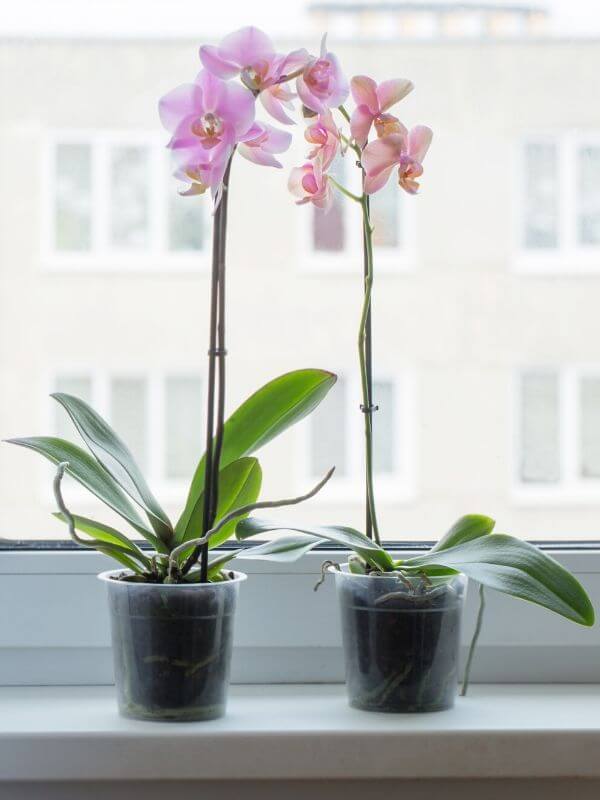
The last thing to keep in mind is that your Orchid will do best if you keep it in one place. Once you have found a good place to keep your new Orchid, try to keep it there.
If you constantly move it, the plant can become ‘fatigued’ from acclimating to new places on a consistent basis.
Troubleshooting
No single place is going to perfectly mimic the natural environment of your Orchid.
There are so many variables in the home that some tweaking of the environment is nearly a guarantee.
For example, if your house is super dry, you could always use an inexpensive humidifier to boost your humidity, or a spray bottle to help by misting throughout the day.

Another common problem with a few easy solutions is the lighting in your home. If you have a room that is too bright, (such as a room with a West-facing window), you can always use a shade cloth or sheer drape to cut the UV exposure a bit.
If, on the other hand, you have a room that is too dark, there are plenty of inexpensive grow-lights on the market that can help to supplement the light for your Orchid.
Room To Grow
The last thing to consider when picking a spot for your new Orchid is the space for more plants.
If you are anything like myself, you will quickly learn that one Orchid is just not enough.
When you pick a good place for your Orchid, it is a good idea to make room for more.
Once you have a good spot to grow your Orchid, adding another will be super easy as long as there is enough space to accommodate it!
Happy Orchids Make A Happy Home
Once you find yourself capable of keeping an Orchid alive and healthy in your home, you are going to want more.
There is so much joy to be found in keeping green leaves and beautiful blooms throughout the house.
With the confidence gained in caring for Orchids, you might also want to venture into other house plants or flowers that others might find to be difficult or ‘particular’.
Whatever your Orchid success inspires you to do, I hope that this guide about where to keep your Orchid has helped to kickstart your journey into the world of Orchid growing.
Just remember that your Orchid needs good light, humidity, and warm temperatures to survive.

Written By
Amber Noyes
Amber Noyes was born and raised in a suburban California town, San Mateo. She holds a master’s degree in horticulture from the University of California as well as a BS in Biology from the University of San Francisco. With experience working on an organic farm, water conservation research, farmers’ markets, and plant nursery, she understands what makes plants thrive and how we can better understand the connection between microclimate and plant health. When she’s not on the land, Amber loves informing people of new ideas/things related to gardening, especially organic gardening, houseplants, and growing plants in a small space.

Thank you for the insights; they are of great help. Having orchids, the hardest part of it has been watering (amount, right time and how) can you show different ways to water the orchid according to their size and location. I currently have one and I bought a vase with holes all around the base, some people say, just 3 ice cubes, others leave them in water for 15 minutes or until the leaves become sturdy and shiny; I did it the last time and one leaf became yellow; after one week I am checking its medium and it is dry but I am concern about the best method of watering it, so far neither method has been effective. Reading your blog, you mention the water in the houses for the most part contain chemicals and it can be another contributing factor that prevents the plant to be healthier. We have water filter system, is there any other type of water you recommend, some people claim purified water…. not sure how it can help, can you elaborate on that and what are good water alternatives for my plant? Thank you, Marge